| strona główna | cmentarze | warto wiedzieć | księga gości | napisz do nas |
MIĘDZYRZEC PODLASKI |
||
A straight road leads to the Jewish cemetery. Warszawska Street crosses that road then makes a left onto Brzeska Street and a few hundred meters later separates two cemeteries: the Catholic cemetery to the left and the Jewish one to the right. One can get there without actually seeing the town. It is worth it however, to see the colorful square called John Paul II Square , with its XVIII century Saint Joseph 's Church (it used to be a Greek Catholic church). It is also worth it to get lost in the old little streets: Jatkowa or Zelazna, or on Listopadowa Street - across the river - where one can buy the country's famous pyramid cake at Zaniewicz Bakery. Miedzyrzec used to be known as one of the many important abodes of the Greek Catholics that were under the patronage of Prince Adam Czartoryski. Miedzyrzec was also known - especially among Jews - for its rich cultural life. It was a place where drama groups functioned, where a theater would visit, where books were published and then found in a local library. But the Jews came to Miedzyrzec not only for spiritual reasons. The town, located on the main trade route between Brest and Warsaw , was a convenient connection to Lublin and Chelm and hence an attractive place of settlement for Jewish merchants. In 1674, Jews constituted 21%, and in 1827 - already 65% of the total population. They had a synagogue, houses of prayer, cheder, their own hospital, and later on even three weekly newspapers - published in Yiddish. The traditional occupation of the local Jews was paint brush and hair brush production. Brush manufacturers hired thousands of workers. Products from the local tanneries were known throughout the world. There were also other factories in the town: a pan factory, a wire factory, a bulb factory and about nine hundred stores. There were doctors and lawyers as well as representatives of other free occupations. Right before the Second World War, Jews constituted 90% of the town's residents (75% when the surroundings are included) 16,000 in total (according to Dr. Naftali Brezniak - a little less according to other sources). 180 houses out of the 201 houses located in the town belonged to Jews. The Jews of Miedzyrzec died in Majdanek, Treblinka, and other extermination camps after being deported in seven consecutive actions; they were also simply killed in the streets, in temporary hideouts, or directly at the cemeteries, where 200 Jews who tried to escape transportation to a camp were shot in May of 1943.
|
||
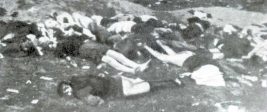 |
||
| After an execution at the Jewish cemetery in Międzyrzec Podlaski | ||
The last action took place between July 18th - 19thof 1943, when the town was already technically Jude rein (cleansed of Jews). It was then, in revenge for the action of the Polish Underground, in the Piaski suburbs the last 179 Jews of Miedzyrzec were killed. Their remains, exhumed three years later, were buried in a collective grave. There are matzevahs of graves of two young men at the cemetery: 23 year old Srul Zylbersztein (1946) and 25 year old Szymon Finklesztein (1947). They died a tragic death after the war. What kind of death? The question remains without an answer. And how many Jews of Miedzyrzec and its precincts survived? We know of two thousand young people who left the town in October 1939 with the Russian army. There were also some who escaped before that. A very few survived in the town itself. One of them, Avraham Gafni writes in a letter to us: "Two people survived in a hideout by Rynek - today John Paul II Square . They were with no help. The house they were hiding in was located next to the former Sobelman's Hotel, in which the Nazis stayed. There is a theater play about them in Tel Aviv, unfortunately not in Polish. Thanks to help of Poles, another 8 Jews survived in the town and another six in the town's neighborhood. I was one of them. After the war, in July 1944, there were 24 Jews in the town; later on people who survived the Nazi camps came in. Not counting those who ran away with the Russian army in the beginning of the war, about 170 Jews survived". Those who somehow escaped the extermination together with descendants of immigrants created The Metzritch Relief Committee in New York . |
||
 |
 |
 |
It's agreed that the Jewish cemetery in Miedzyrzec was created in 1810, although some sources cite earlier dates. The oldest matzevah is from 1706. The necropolis was destroyed during the Second World War, and some matzevahs were used by the Germans to harden the roads. Today the cemetery is surrounded by a brick, partially plastered wall, funded in 1946 by Sara and Abraham Finkelstein. From the side of Brzeska Street the cemetery doesn't stand out in any way. It is next to a small private house. A small metal gate serves as the entrance to the cemetery. One has to either be lucky to find it opened or one must knock on a window. The last formal custodian of the cemetery died recently. Who took over his duties? Possibly the man who opened the gate for us. |
||
 |
 |
 |
About 80 granite, sandstone, and cast iron matzevahs survived in the territory of 6.86 acres. Many of them are almost completely overgrown by grass and moss. Here a piece of stone sticks out, there, a piece engraved with a Hebrew font can be found. The inscription on some of them remained in perfect condition, on others they are illegible. They are mostly in Hebrew. Inscriptions in Polish can also be found; for example on the matzevah of common grave of three rabbis killed in 1942: Pejsach Raczko, Ber Roskin, and Dawid Flinkier. The same names appear frequently: Finkelsztein, Zajdman, Szapiro, Szejmel. One can also see the same symbols again and again: open books, crowns, broken trees, and hands on the graves of the Kohanim. One of the oldest matzevahs, from the XIX century, reside deep in the overgrown bird cherry bushes in the central part of the cemetery. Those matzevahs are rare. The ones from Miedzyrzec were made at the local ironworks of the Shejmel brothers. Despite some rust, they survived in pretty good shape. With some effort, one can read the inscriptions on the matzevahs . About 200 matzevahs are built into a wall. In a way, they incrust the wall. Some of the stones only lean against the wall. Unprotected grave stones may disappear from the place some day. The other side of the cemetery's fence is broken. An inventory of the matzevahs has not been done. Nobody would even notice if anything was missing. |
||
 |
 |
 |
We owe the current state of the cemetery to the Mezritch Relief Committee, a private foundation of Sara and Abram Finkelstein, who originally came from Miedzyrzec, and to the local government which actively participated in its renovation. The old cemetery, created probably in 1512, is located not far from here, at Brzeska Street . The necropolis was totally destroyed; there is a meadow there today. |
||
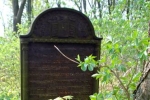 |
 |
 |
On the forum www.odkrywca.pl one of the Internet users writes about the destruction of the cemetery: "The Jewish cemetery happened to be located at a place where sand was used for cement production. We were 10 years old time at the time and we used to go to the sand hill to jump off the slope. The excavators were digging into the cemetery and we were able to see the cross-sections of the graves. Some remains were without a coffin, but there were plenty of graves with coffins. Sometimes curiosity made us dig there, but we were never able to find anything. The leftover remains were taken to a garbage dump." For more information on the history of the Jews of Miedzyrzec go to: Text and photographs: Renata Zawadzka Ben Dor
Translation: Ania Yorinks |
||
| Jewish cemetery in Międzyrzec Podlaski photos: Zbigniew Nowak |
||
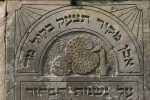 |
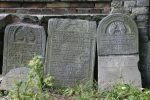 |
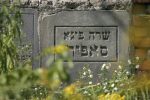 |
| strona główna | cmentarze | warto wiedzieć | księga gości | napisz do nas |
